Tacuara is Bamboo
A living guide, a noble material, a silent teacher. My journey with the tacuara is rhizomatic: it spreads, connects lands, people and knowledge. It challenges me, brings me joy, and teaches me to serve something greater.
Bamboo is the lens that weaves through everything I do. From the way I draw to the way I facilitate or give talks, this plant teaches me to design with life. When you work with me, you’re also bringing this way of seeing the world — flexible, alive, and regenerative.

Is tacuara bamboo?
That hollow stem many people call caña or tacuara is part of a vast and surprising family: bamboo.
With over 1,700 species spread across the planet, bamboo grows fast, in networks, and with a rhythm that doesn’t negotiate. From the Himalayas to South America, it has accompanied humanity in homes, tools, rituals and songs. Today, it’s being rediscovered as a powerful ally for regeneration.
Among all its forms, one grows abundantly in Uruguay: Phyllostachys aurea, the tacuara. It’s the most common, but not the only one. In our rural lab, we already cultivate over 20 species integrated into native woodland.
Its roots spread underground like a web, structuring the soil, purifying water and preventing erosion. It carries strength, lightness, shade and beauty. And—if we learn to see it—wisdom too.
Bamboo adapts, teaches, transforms. It regenerates ecosystems, activates economies and awakens ancestral memory.
Did you know its ancestors lived alongside dinosaurs? Or that it was one of the few plants to survive the Hiroshima bomb?
The word "tacuara" comes from Guaraní and means “hollow wood”. In Uruguay, we even have a department called Tacuarembó, which means “sprouting tacuara”.
🌿 Bamboo holds ancient secrets…
and invites us to imagine what hasn’t yet emerged.
What if bamboo is part of the plan?🎋
Bamboo can heal soils, capture carbon, boost local economies, create habitats and awaken dormant skills. It carries strength, rhythm, flexibility and beauty. And it holds an immense regenerative potential that begins to reveal itself when we change how we relate to it.
When cultivated consciously—honouring its cycles and collaborating with the ecosystem—bamboo becomes a lever for transforming landscapes and ways of life.
With bamboo, we can do things differently. More consciously. More locally. More joyfully. With work that reconnects, that cares, that places life at the centre.
It reminds me that to regenerate is to stop degenerating. To return to a natural order. To care for the land that cares for us.
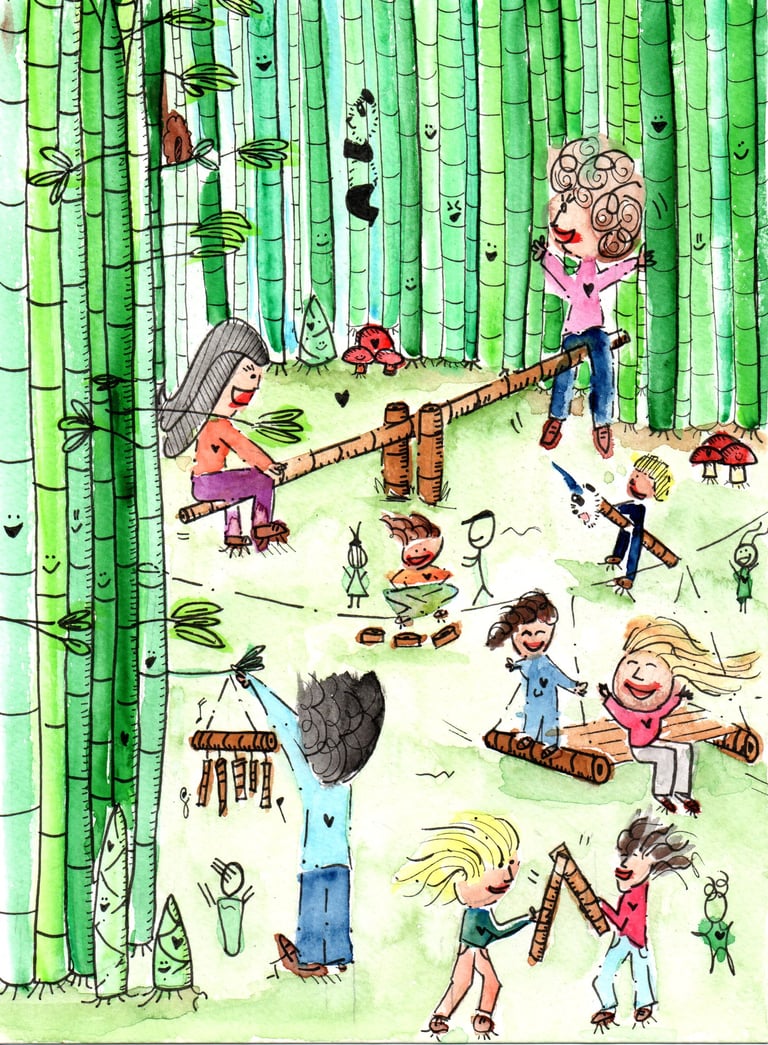

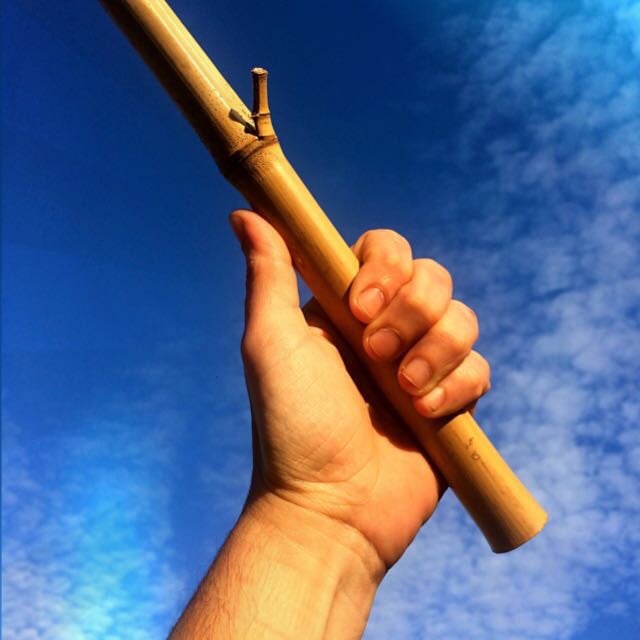

Bamboo in action
My connection with bamboo is symbolic, practical, territorial and professional. Here are three key branches of this creative ecosystem I co-created with Lucía Kröger — my life and mountain partner. From Uruguay, we design experiences, stories and solutions that inspire and transform.
A creative platform to explore bamboo’s regenerative potential: We design and facilitate workshops, books, immersive experiences and applied solutions that blend art, education and territory. From Uruguay, we support personal, community and organisational transformation — with bamboo as a catalyst for change.
[Linktree]
A rural bamboo lab in the hills of Uruguay: A centre for creativity, cultivation, research and field-based learning. Here, we grow over 20 species, host visitors, prototype ideas and collaborate with schools, universities, entrepreneurs and organisations committed to regenerative futures.[Linktree]
An illustrated book series where bamboo becomes a symbol of imagination and regeneration: Seven stories that mix fantasy with real-world knowledge to spark curiosity in children, honour nature and reconnect with our cultural roots. Each book includes creative activities, object-making and educational content for families and classrooms.
My bamboo journey
In 2011, I travelled to Hangzhou on a scholarship to train at the China Bamboo Research Center. Those two months were intense: plantations, factories, labs and workshops. I witnessed massive bamboo forests and highly specialised industries, where the “waste” of one process became the raw material for another. I encountered a millenary culture where bamboo is woven into architecture, industry, food, design and spirituality. What we call tacuara in Uruguay, there it was symbol, substance, and possibility.
In 2013, I joined a bamboo housing course in Panama. That same year, I travelled to Costa Rica for the first time, where I met local experts, universities and small-scale community-driven bamboo projects. Two years later, in 2015, I was invited to lead creative workshops alongside local cooperatives and companies. It was a turning point: I realised bamboo doesn’t just get transformed — it transforms.
Around the same time, I was a lecturer at the University School of Design in Montevideo. I mentored students and guided classroom, outreach and research projects focused on regenerative design and circular economy with bamboo. I supervised final theses, sparked technical and creative processes, and saw firsthand how bamboo could awaken skills, purpose and community.
That same 2013, I led my very first bamboo workshop in San Antonio, Salto — part of a university extension project. It was the first time I publicly said something simple yet powerful: tacuara is bamboo. What followed exceeded all expectations. Registrations filled up immediately. But more importantly, I felt something undeniable: genuine enthusiasm, deep connection, and a shared curiosity sparked by this plant. There was something ancestral vibrating in the room — a collective remembering that this cane, so common in our landscape, is also part of our guaraní heritage.
Bamboo showed me a different way to live. A way that is more connected to life. Since then, I’ve chosen to go deeper.
My path with tacuara is rhizomatic: it expands, links territories, and connects people and knowledge. It challenges me, brings me joy, and teaches me to serve something greater.
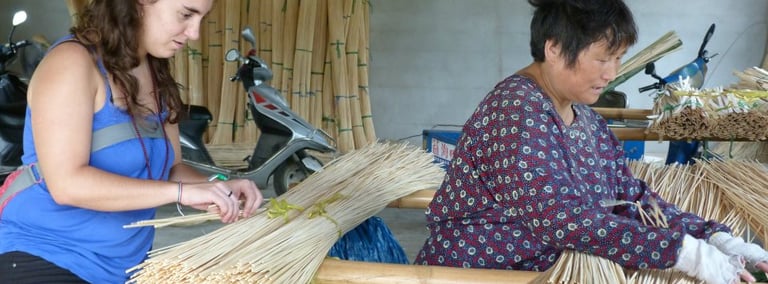

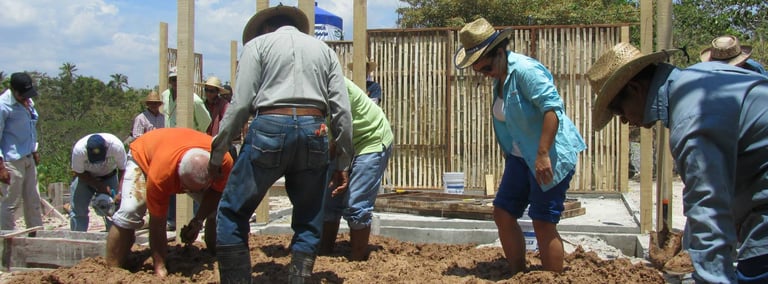

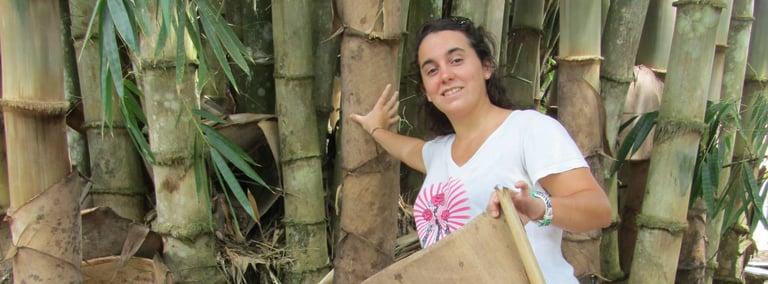

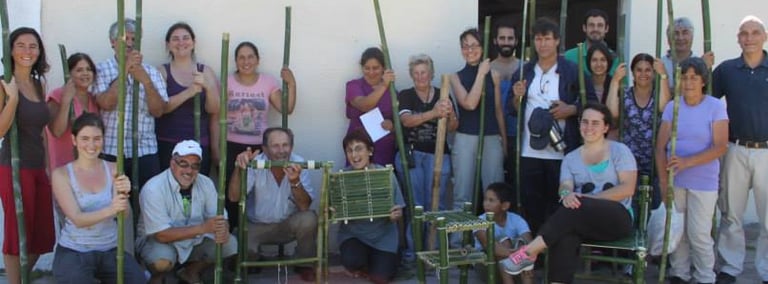


© 2025 La Mujer Bambú | Analaura Antúnez Latorre. All rights reserved.
© Panda-powered tech for a more human world 🫶🏻








